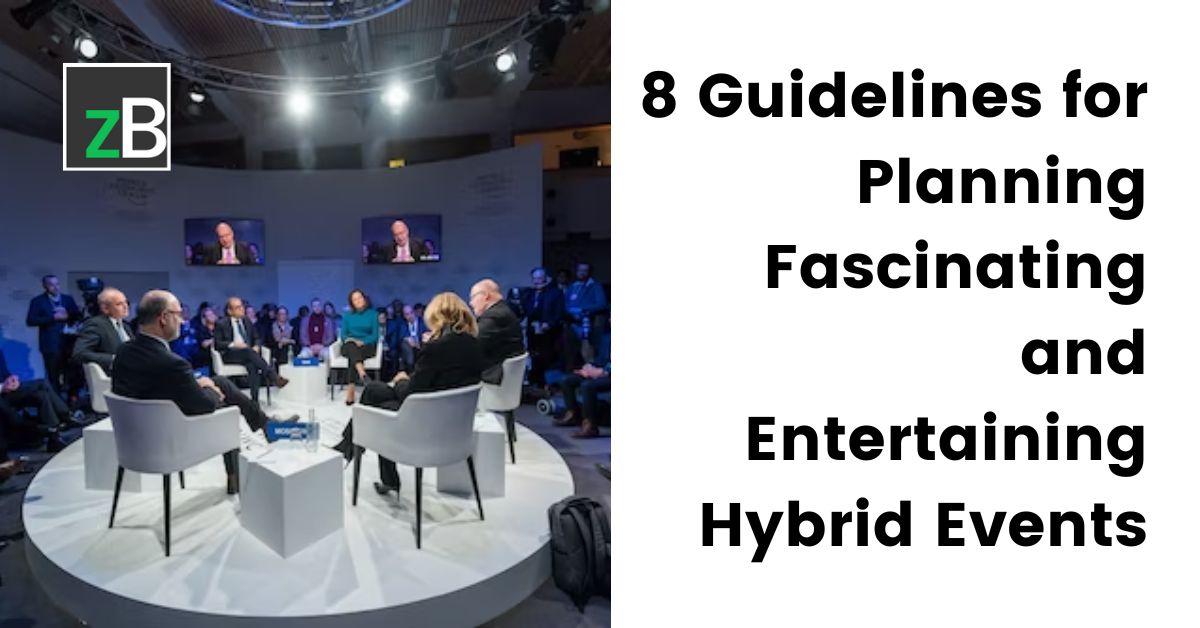8 Guidelines for Planning Fascinating and Entertaining Hybrid Events
10 Mar

Table of Contents
ToggleIf you’re hosting events for your business right now, it’s well worth exploring hybrid events. Hybrid events allow participants to have the choice of attending in-person or online.
In this article, we’ll give you helpful tips on how to plan your hybrid event and keep your audience interested. Whether it’s creating a landing page for the event and ensuring you launch the landing page just in time, or ensuring your page loads efficiently on the day of the event, or encouraging online networking, there’s a lot to consider. So let’s get started!
When planning your hybrid event, it’s important to have a clear staff meeting agenda that outlines key planning steps and responsibilities.

Plan activities that keep online attendees engaged
If you want to host a successful hybrid event, then it’s vital you consider how to keep virtual participants engaged. If participants start feeling bored due to the lack of engagement, they will leave the event. Picking the right online software is key to avoiding this.
However, don’t just pick the first hosting service you encounter. Take the time to compare apps like WebEx, and figure out what works best for your event. It needs to have capacity for your expected audience size, and should include the following features:
Make sure your software can accommodate polls
One common strategy for keeping virtual viewers engaged is through implementing polls, so make sure your software is able to offer these beforehand. Brainstorm some interesting, humorous questions, and ensure you direct a few of these questions specifically at those watching from home so they feel you want their opinion, too.
Create breakout rooms ahead of time
It’s a great idea (especially if you are hosting a particularly large event) to organize and create breakout rooms for your virtual attendees before the event begins, as then your audience can quickly join on the day of the event, with no fuss.
If you are hosting guest speakers, it may be a useful idea to assign each speaker to a breakout room a few weeks in advance, so the virtual participants in these rooms can ask the guest specific questions.
Decide what type of event is best
There are many kinds of hybrid events that are right for different businesses. It’s important you determine well in advance which would be the most engaging for your audience.

Conferences are more formal and bring together those of a shared interest. This would be a beneficial choice if you are interested mainly in networking and knowledge sharing. However, if you are considering holding a conference-style hybrid event, it is massively important you choose the right call conferencing software.
Training sessions are another popular choice and are usually still pretty formal, but leaning towards being useful and informative. They’re conducted with the intention of coaching attendees through various stages, and take a more practical approach. It could be training about a particular product, certain skill sets, or as part of an online course.
Trade shows are designed to gather participants with a mutual interest to display, demonstrate, and discuss new and emerging products. These might be most beneficial for you if you are most interested in attracting a motivated audience who attend with the intention of finding a new product or service that could help them.
Plan the structure of your event
You will need to structure your hybrid event from the start with virtual attendees in mind, in order to ensure they feel like an integral part of the event and not just an add-on for broader reach.
Ensuring regular breaks are scheduled into the event beforehand is important to both in-person and virtual guests. However, in person guests are likely to take advantage of these breaks for networking purposes, scheduling meet-ups in advance. Create a similar experience for your online guests by providing networking space, access to breakout rooms, or a virtual ‘coffee break’ room.

Make sure you satisfy your sponsors
When broadcasting a hybrid event, it’s crucial you plan out how to keep the trust and appeasement of your sponsors. One way you can do this is through dedicating a certain portion of the event to them, and focus this section on promoting their product and encouraging engagement.
You could organize a specific Q&A designed to encourage both virtual and real life viewers to ask questions and interact with the sponsor. If it’s in-person, make sure you provide them with your best video conference room setup, and highlight it on your schedule. If it’s online, make an effort to encourage in-person participation.
Set up procedures for repurposing content from your event
Setting up procedures for capturing, and then repurposing content from your event is an excellent way to get the most out of your event and also increase virtual engagement.
This is particularly important if you’re running an event that has multiple concurrent sessions. Rather than panicking about missing something, your attendees will be able to catch up on talks afterwards. Not only is this good for them, it’s good for you too. This increases the chances of the conversation continuing for weeks afterwards, keeping your event and brand in the public eye.
Don’t forget: it’s not just about the sessions themselves. Get to your venue early on the day of your event, and set up recording devices to catch the most entertaining or funny moments, so you can later repurpose these into snippets that can be used to promote your brand elsewhere.
The key here is to collaborate with your team on reviewing repurposed content, like videos, pictures, or articles. To help with this, you can make use of a video review and collaboration tool to ensure that every member of the team is on the same page.
Plan for success
Hybrid events allow you to transcend challenges like venue capacity limits and budget, and tackle other issues such as including attendees who cannot commute, or simply would prefer not to join in person. Because of this, hybrid events can even result in unexpected and unprecedented reach. If you’re planning on having merchandise, product samples, or other physical goods, ensure you have an Inventory Planner you trust and a detailed back-up plan!
As we mentioned earlier, choosing the right hosting platform is important, and this is something to bear in mind: always overestimate attendance, rather than underestimate. You don’t want your platform of choice crashing, restricting quality, or otherwise making the virtual experience unpleasant, after all.

Keep in-person attendees in mind
Although it’s hugely important not to neglect your virtual audience, don’t forget about the in-person crowd too. It can be tempting to invest all your energy in the global community you’re trying to attract, but people will have traveled to attend in person and they deserve recognition.
One very important element is having a back-up venue planned in advance. That way, if there’s a sudden change or incident, you can still run the event as planned, just elsewhere.
Beyond this, consider what physical problems might arise, and potential solutions. Some examples include:
- Traffic and commuting issues: ensure late attendance isn’t a problem, and choose a location that’s easily accessible by public transport.
- Places to eat: make sure the location has a range of food options nearby, at a variety of price points.
- Venue accessibility: accessibility isn’t just about the travel there. Check your venue is accessible for disabled guests well in advance.
Ensure your team has an efficient communication system
Of course, all this planning will go to waste if your team doesn’t talk! Make sure it’s easy for your team to communicate, both with each other and with attendees. This might involve scheduling regular meetings, investing in a new visual collaboration solution, or having a day in the venue before your event starts just to get on the same page.
Getting started
It’s important to think about how to effectively plan your hybrid events, but also to consider whether they are right for you and your business. Examine the demographics of your target audience, and reach out to find out potential interest before you start investing. And, when considering costs, make sure you’ve factored in the software you might need, whether it’s something like the HubSpot GoToWebinar integration or a whole separate platform.
If it turns out they are right for you, these eight tips should help you run a fascinating, entertaining hybrid event – and keep your audience coming back for more.
Related Post
Recent Posts
- Best Practices for Efficient Document Reviews and Collaboration December 18, 2025
- MEP Document Management: How to Streamline Reviews & Avoid Rework October 3, 2025
- What Is Online Proofing Software? And Why Content Review Breaks Without It July 11, 2025
- How Laerdal Medical Cut eLearning Review Time by 50% with zipBoard’s Visual Review Tool July 9, 2025
- Why Your Team Needs a Content Feedback System (Not Just Comments in Docs) May 28, 2025
©️ Copyright 2025 zipBoard Tech. All rights reserved.


